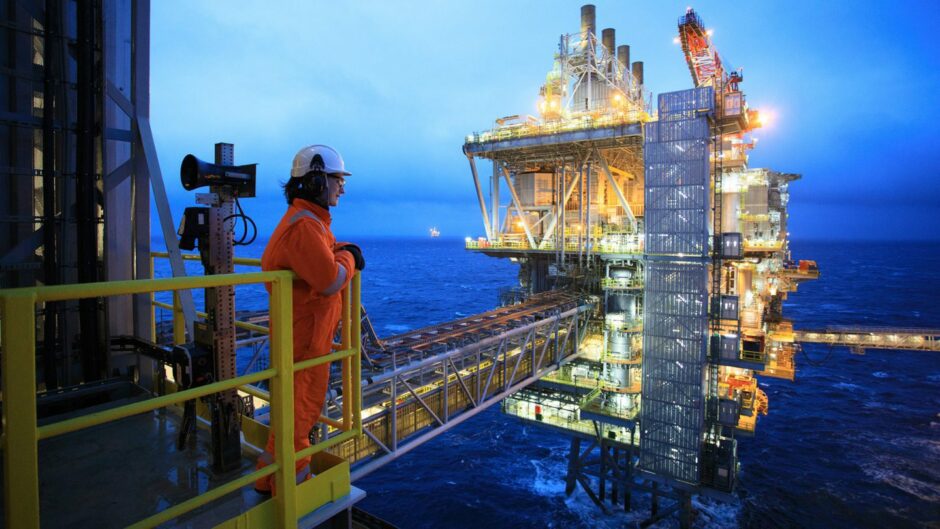
The UK has made impressive ground in its efforts to remove carbon from its energy system. As the country closes in on 2050, it will become harder – and is currently off course to achieve net zero, according to DNV.
The Norwegian consultancy issued a report last week on the UK’s transition plans. The UK will miss its decarbonisation commitments for 2030 and its lawfully mandated net zero requirement for 2050.
In 2050, 35% of energy consumption will still be of fossil fuels, it warned.
Domestic consumption will still be dominated by natural gas, with heat pumps struggling to make progress. DNV also noted the continued reliance of aviation on oil products, through to 2050.
It would not be impossible to close the gap. “2023 was a record year for all the wrong reasons,” DNV regional director UK & Ireland Hari Vamadevan said, at the report launch. “Climate change is manmade but the solution will also be manmade. We can and will move forwards faster together.”
Very tough
Speaking to Energy Voice, DNV operations manager UK & Ireland Frank Ketelaars said it was an open question as to whether the target could be achieved.
“In the end, it’s all about costs. Can we actually build enough renewable capacity to replace all those fossil fuels?”
DNV sees decarbonised electricity as covering most of the ground to the target. Today, the country has 315 TWh per year and it predicts this will scale up to 700 TWh per year in 2050. Variable renewable sources will scale up dramatically, from 90 TWh per year to 560 TWh in 2050.
Helping this transition will be increased efficiency, which DNV expects will provide savings of around 25%.
To meet this, the UK will need to build around 140 GW of new generation capacity, of which 90% will be new wind and solar farms. “Even delivering this 140 GW is going to be very tough,” Ketelaars said. “It’s harder, the more and the closer you get, it’s harder.”
In order to achieve this electrified system, the grid will need to treble its capacity. Furthermore, because of the reliance on variable renewables, the system will need to incorporate energy storage. The first part of this will be around 200 GWh of utility scale battery storage, while hydrogen storage can also be used to capture renewable energy that would otherwise be curtailed.
“There’s a big scope in terms of redesigning the electricity market,” Ketelaars said. He also suggested paying more tax. “Why should we not raise tax by1% to finance the energy transition? Why not for an existential crisis? It is going to be expensive, and I think that’s what people forget.”
Political choices
The question of how much it will cost is one of the major sticking points for politicians, who have recently rowed back on some of their commitments.
There is a “green prize” for the economy of transitioning, the DNV official said. In the short term, electricity costs will stay fairly high. However, he predicted that by 2026, costs would fall below 2021 levels. By 2050, electricity costs should be around 40% below 2021 levels.
“Obviously, you have to invest first, so you have to look at the full picture. But I do believe at the moment, at least the electricity price is artificially high,” Ketelaars said, citing the role of gas in pricing.
Over the last 30 years, spending on infrastructure has been around £26 billion per year. DNV sees this increasing to around £38bn per year for the next 30 years. While the investment is higher, it remains flat in terms of its stake in GDP – at just over 1%, from 2000 to 2050.
“The main thing is taking some big decisions. Someone has to look at this and define, based on an all kind of cost perspective, what it should look like. At the moment, we’re not taking any decisions,” Ketelaars said.
“We’re just slowly sleepwalking and I think we’re going to sleepwalk for another year and a half because of the election. I think no one is going to take any really big decision.”
System operator
More should be done on the planning side, Ketelaars said. A New Energy System Operator (NESO) is due to become operational in the summer this year, with responsibility for planning electricity and gas networks, in addition to operating the electricity system.
NESO has a “big challenge” facing it, with the DNV official calling for more investment into the agency already. “Should we not invest upfront? That’s cheap compared to all the other spending, like £38 billion a year. Should we not be spending upfront on the planning side?”
While politicians may be scared of rocking the boat, there is a good news aspect to the energy transition that is too often overlooked.
“This is the biggest infrastructure project we’ve ever done. Wow, that’s a great opportunity. It costs a lot of money, but in terms of overall economy, it’s actually a great place to spend your money.”
A number of oil and gas projects are still moving forward in the UK, DNV noted. Around 30 projects are on the cards in the next five years, with potential investment of £18bn.
Production will continue declining, though, and focus is increasingly on decarbonisation and possible adaptation to storing carbon. DNV said the hydrocarbons industry was on track to meet its 2025 and 2027 targets, but off-track for 2030. Electrification of offshore fields is crucial, but “expensive and challenging”, the report said.
Needing support
The DNV official defined four areas that could provide the long-term certainty required. “There’s a need for clear, strong, long-term political support. Floating offshore wind needs support. We need to increase carbon capture and storage (CCS) capacity and to kickstart hydrogen, which is still not as strong as it could be.”
DNV downplayed the scope for hydrogen as a cure-all for the UK’s decarbonisation plans. The country is only on course to reach 1 million tonnes per year of hydrogen by 2030, of which only 60% would be low carbon. This is around half the government’s target.
Hydrogen will have a part to play, but – based on the rate of change – it will still be double the price of natural gas in 2050, DNV says.
Ketelaars said there was a need to think about how hydrogen would meet the UK’s needs. He highlighted the opportunity in ammonia derivatives, to decarbonise heavy transportation, which would account for half the volumes in 2050. Industry would take 25% and dispatchable power generation the remaining 25%.
“I think the role in [domestic] heating sounds more and more difficult to justify,” he said. “I think there’s also very much a role in actually producing hydrogen as a fuel during periods when we have too much power.”
DNV provides its projection for the future based on the UK’s current progress. If the political will shifts in support of a major infrastructure expansion, the UK can still achieve its net zero target.
To course correct, though, will require first political faith and then an injection of cash and community outreach, to persuade communities of the need for power and grid construction. It is not clear the UK’s political parties have the will to deliver such an ambitious plan.

 © Supplied by DCT Media
© Supplied by DCT Media